This article has multiple issues. Please help improve it or discuss these issues on the talk page. (Learn how and when to remove these template messages)
(Learn how and when to remove this template message)
|
Teen patti (??? ?????, meaning 'three cards' in English) (also known as flash or flush) is a gambling card game that originated in the Indian Subcontinent. The game, which is actually a simplified version of poker, is popular throughout South Asia. Boats out of India call it "flush" to escape any legal negativity surrounding the game where it is played legally.
| Origin | subcontinent |
|---|---|
| Alternative names | Tri-card |
| Type | Gambling |
| Family | cards |
| Players | optional (maximun 10) |
| Skills required | Counting |
| Cards | 52 |
| Deck | Anglo-American |
| Play | Counter-clockwise |
| Playing time | unlimited |
| Random chance | Medium |
| Related games | |
| Brag, Poker | |
Contents
Game start
The game starts with one of the players dealing the cards. The cards are usually dealt counter-clockwise.
Before starting the game, usually an agreed number of card(s) is/are picked or dealt to decide the dealer for the opening hand. Each player may be required to put up an ante into the pot before picking/dealing the card(s). The winning player gets the pot. The relative rankings of the card(s) may also decide the seating arrangement for each player. This entire process is called cut-for-seat. After the first/opening hand, the winner of any hand will be the dealer for the next hand.
Betting
There is usually an ante or boot amount put on the table (the pot). The betting then starts by the player next to the dealer.
Loose versus tight play
Loose and tight in teen patti refer to a player's general tendency to play hands beyond the first round or to fold them quickly. There is no commonly accepted threshold in terms of a ratio or percentage of hands played, but a "tight" player will often choose to fold weaker hands, while a "loose" player will bet on more of these hands and thus play more hands to the show/showdown.
Entry fee
There is usually an ante or boot amount put on the table (the pot). This ante may be in the form of an equal amount put by each player, or a single larger amount put by one player (usually on a rotation basis).
An ante is a forced bet in which each player places an equal amount of money or chips into the pot before the deal begins. Often this is either a single unit (a one-value or the smallest value in play) or some other small amount; a percentage such as half or one-quarter of the minimum bet is also common. An ante paid by each player ensures that a player who folds every round will lose money (though slowly), thus providing each player with an incentive, however small, to play the hand rather than toss it in when the opening bet reaches them.
Antes discourage extremely tight play. Without the ante, a player who has not paid a blind can toss in his hand at no cost to him; the ante ensures that doing so too often is a losing proposition. With antes, more players stay in the hand, which increases pot size and makes for more interesting play.
In games where the acting dealer changes each turn, it is not uncommon for the players to agree that the dealer (or some other position relative to the dealer or the button) provides the ante for each player. This simplifies betting, but causes minor inequities if other players come and go. During such times, the player can be given a special button indicating the need to pay an ante to the pot (known as "posting") upon their return.
Post
A player who is temporarily away from his seat (i.e. for drinks or a restroom/bathroom break) and misses antes is also required to post to re-enter the game. They must pay the applicable ante to the pot for the next hand they will participate in. In this case, the amount to be posted is the amount of the ante at the time the player missed them.
Posting is usually not required if the player who would otherwise post happens to be in the ante. This is because the advantage that would otherwise be gained by missing the ante, that of playing several hands before having to pay ante, is not the case in this situation. It is therefore common for a new player to lock up a seat and then wait several hands before joining a table, or for a returning player to sit out several hands until the ante comes back around, so that he may enter in the ante and avoid paying the post. For this same reason, only one ante can be accumulated by the player; old missed antes are removed when the ante returns to that player's seat because the player was never in any position to gain from missing the antes.
Blind
A blind or blind bet is usually a forced bet placed into the pot by one or more players before the deal begins, in a way that simulates bets made during play. The most common use of blinds as a betting structure calls for two blinds: the player after the dealer blinds about half of what would be a normal bet (small blind), and the next player blinds what would be a whole bet (big blind). This two-blind structure, sometimes with antes, is the dominating structure of play. Sometimes only one blind (half or whole bet) is used (often informally by the dealer as a "price of winning" the previous hand).
Besides the forced blind bet, players may optionally play blind and put an optional blind bet to the pot. Blind players may place bets that are at least half of the current level of bet by a seen player. Seen players have to place a bet that is at least double that of the current level of bet by a blind player.
Some players set a limit on how many times a player can bet blind- for example, one could bet blind on his first three turns, one could bet blind on his first two turns.
Call and raise (chaal)
After the ante and the forced blind bet(s), the regular betting starts with the next player putting his bet amount to the pot.
The total bet can be divided into two components - the call and the raise, both being usually called as Chaal. Each player has to place a bet that is at least equal to the previous player's bet, with the option of raising the bet. This bet then becomes the (new) current level of bet (Chaal). Usually there is a limit imposed to the raise, such that the total bet amount (with the call and the raise) cannot exceed twice that of the previous player's bet. Also, the bet should be in even amounts (2,4,6,8..), especially when there is one player still in the game as Blind player. It is because the player playing blind plays half of the normal bet, and odd amounts can't be halved.
This is very important to understand that this betting structure is different than Poker, as every time the bet is new (disregarding of how much amount was previously bid.) Let's say, one player bet an amount of 2 and second player raises it up to 4, now the first person would have to put additional 4 into the pot to make a call or would have an option to raise the bet up to 8. (Which is different in case of Poker where the second player adds 2 more to bring his bet to the level 4.)
Limits
Betting limits apply to the amount a player may bet or raise, and come in four common forms: fixed limit, spread limit, pot limit, and no limit.
Note: The limits may be applied to the raise or the bet.
All such games have a minimum bet as well as the stated maximums, and also commonly a betting unit, which is the smallest denomination in which bets can be made.
Fixed
In a game played with a fixed-limit betting structure, the maximum raise amount generally equals the last bet amount (current level of bet). Thus, the maximum raise amount is equal to the call amount, and the maximum bet is double that of the last bet.
Spread
A game played with a spread-limit betting structure allows a player to raise any amount within a specified maximum (subject to other betting rules).
For example, a game with a "$1000 spread-limit" allows each player to call and then raise up to a maximum of $1000.
A simpler approach is to bet up to a maximum amount equal to the spread-limit. So in the above example, the maximum bet (call + raise) is limited to $1000.
Pot
A game played with a pot-limit betting structure allows any player to raise up to an amount equal to the size of the whole pot before the raise.
For example, let us assume that there is an ante of $50 and a single forced blind bet of $10 in the pot at the start of the regular betting round, and all subsequent players are seen/have seen their cards. The next player may bet the minimum amount of $20 (double that of the last blind bet of $10). This player may also raise up to $80 (as there is now $50 + $10 + $20 = $80 in the pot) to bring his total bet (also the new current level of bet) to $20 + $80 = $100. If he does in fact bets $100, the total amount of the pot is $160, and the next player may call (put the minimum bet of) $100, and raise up to $260 for a total bet of $360 (after calling the $100 bet, the total amount of the pot is $260, so he may raise up to $260). The next player would then be entitled to call at $360 and raise up to $880 (after calling $360, the pot would contain $880, thus he may raise $880).
A simpler approach is to bet up to a maximum amount in the pot. So in the above example, the first seen player may bet a minimum of $20 and a maximum of $60. If he does bet the maximum, the next player may bet a minimum of $60 to a maximum of $120. If he bets the maximum, the next player would then be entitled to bet a minimum of $120 and a maximum of $240. Note: In this example, for the later bets, the maximum bet is twice that of minimum bet because of the chosen ante and forced blind bet amounts. For other combinations, this relationship may not hold.
No-limit
A game played with a no-limit betting structure allows each player to raise the bet by any amount.1000000000000
Moves
Blind play
When somebody plays blind, he has not seen his cards and places his bet by guessing the strength of his card combination and of other players. He should place a higher bet if he has faith in his luck and his card combination will be stronger than other players. If somebody wants to play it safe and not take risks, he should place bet for a smaller amount.
Play (chaal phase)
Anybody can choose to see their cards at any time and then place a bet (when it's their turn) depending on how strong he thinks his card combination is. He can pack if he thinks his card combination is not strong enough. Though he can pack out of turn, it's not considered courteous to do so. There is a variation to this rule in which players are only allowed to see and fold their cards when it's their turn.
Sideshow, backshow, and compromise
If somebody have seen his cards, he can ask for a sideshow after placing his bet. He can ask for a sideshow with the previous player (who placed the last bet). Hence sideshows are also referred to as backshows. Sideshows are only permitted if no player is playing and if the player request for the third time no one can deny it and to whom it been requested the player have to show the cards
The player can either accept or decline others sideshow request. Player may want to decline sideshow if one is trying to bluff way through, in that case one is likely to fold due to poor hand when two hands are compared. Player may also want to decline sideshow request if one is holding a strong hand and/or would want pot money to increase to make game more interesting.
If the sideshow request is accepted, the two players involved privately compare their cards, and the player with the lower hand is forced to fold. If the hands are equal, the player who asked for the sideshow is forced to fold.
If the sideshow is refused, the player requesting the sideshow must bet to stay in the game or fold.
Tie
At any point during the game, if both players are not want to show/Back out his card then game will be consider as a cancelled.And total money which is invested in the game that will be return/share between both players.There have not any situation to win the game by any player.
Show
The betting will go on like this until one of two things happens:
- All but one player pack. The sole remaining player wins the money in the pot, regardless of what cards he or she holds.
- All but two players pack. In this case, during his or her turn, one player pays for a "show". At this point, both players' cards are exposed and compared and the higher-ranking hand wins the pot.
The following are the rules for a "show":
- Seen player can ask for a show with blind player for four times the current bet.
- If both players are seen then either may ask for a show by paying two times the current bet.
Note: A blind player cannot ask for a show or sideshow.
In most modern games, especially where the stakes or bets are high, shows are paid for at the current bet level. Also, while a blind player cannot ask (nor can be asked) for a sideshow, the blind player can ask for a show. For a show, a player can choose not to show, if they give up the pot. Ultimately, all rules are discussed and agreed by all players before the game begins.

Request Movie Now
Watch movie Teen Patti online on Amazon
Up to 70% discount on Mobile and laptop for today : Buy now

Up to 80% discount on Pampers diapers other baby product : Buy now 

Stream Movie Now
Watch movie Teen Patti online
Watch The Movie On Prime
Jolly Days Full HD Movie Download
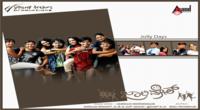
13B Full HD Movie Download

Saat Bijliyan Full HD Movie Download
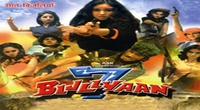
Char Darvesh Full HD Movie Download
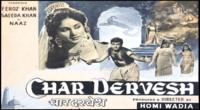
Main Sunder Hoon Full HD Movie Download
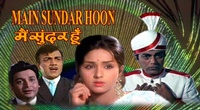
Maha Pawan Tirth Yatra (1975) Full HD Movie Download
.jpg)
Kabhi Socha Bhi Na Tha Full HD Movie Download
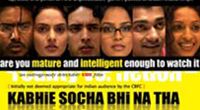
Geet (1992) Full HD Movie Download
.jpg)
We are Family Full HD Movie Download

Asha Jyoti Full HD Movie Download

Jung (2000) Full HD Movie Download
.jpg)
Parthale Paravasam Full HD Movie Download
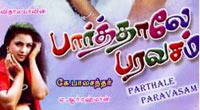
Meri Zindagi Ek AGNEEPATH Full HD Movie Download
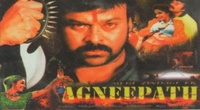
Appula Apparao Full HD Movie Download
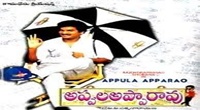
Hot Malaika Full HD Movie Download

Krishnan Marriage Story Full HD Movie Download

Loaded Full HD Movie Download

Maha Bali Full HD Movie Download

Devi Putrudu Full HD Movie Download
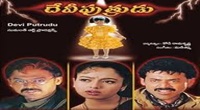
Megham - Of a young man cured of anger Full HD Movie Download

Pratikaram Full HD Movie Download


Download latest Movie from bollywood
- 1> baaghi 3
- 2> THE SKY IS PINK MOVIE FULL STORY AND REVIEW
- 3> Luka Chuppi
- 4> TO ALL THE BOYS I’VE LOVED BEFORE
- 5> Kabir Singh
- 6> Street Dancer 3D
- 7> Simmba
- 8> Gone Girl
- 9> The Girl Who Lived
- 10> Ludo
- 11> DILWALE DULHANIA LE JAYENGE
- 12> GUILTY
- 13> The Godfather
- 14> Adventures of Rusty
- 15> Sooryavanshi
- 16> Satyameva Jayate 2
- 17> Thappad
- 18> Bhool Bhulaiyaa 2
- 19> KGFChapter 2
- 20> Mardaani 2
- 21> Pinjar
- 22> Shivaji maharaj
- 23> Ek Villian 2
- 24> Hungama 2
- 25> Divergent
- 26> Mumbai Saga
- 27> The Internship
- 28> HIT (telugu)
- 29> Panga
- 30> The perfect date
- 31> 16 December
- 32> Gopala Gopala (Telugu)
- 33> Brahmastra
- 34> Gangubai Kathiawadi
- 35> Manmadhudu
- 36> Nenu local
- 37> Mahanati
- 38> Shatamanam bavathi
- 39> Lagaan
- 40> After
- 41> MOM
- 42> Shamshera
- 43> Raguvaran BTech
- 44> Khakee
- 45> The villain
- 46> OM
- 47> Mr. perfect
- 48> Bueatifull mind
- 49> Hichki
- 50> Gabbar Singh
- 51> Jogi
- 52> Before Sunrise
- 53> Before Sunset
- 54> Before Midnight
- 55> The Big Bull
- 56> Top Gun: Maverick
- 57> The Purge
- 58> The Sky is Pink
- 59> Laxmmi Bomb
- 60> Sadak 2
- 61> Sufna
- 62> Prithviraj
- 63> PK
- 64> Coolie No 1(2020)
- 65> Black Widow
- 66> Dear Zindagi
- 67> Dil Bechara
- 68> PHIR HERA PHERI
- 69> WAR
- 70> Dostana
- 71> RRR: Roudram Ranam Rudhiram
- 72> Maidan
- 73> Dabbang 3
- 74> Chhalaang
- 75> life as we know it
- 76> SherShaah
- 77> Sandeep Aur Pinky Faraar
- 78> Event Horizon
- 79> 83
- 80> Radhe: Your Most Wanted Bhai
- 81> Gunjan Saxena: The Kargil Girl
- 82> Mr India
- 83> Vivah
- 84> Anokha Bandhan
- 85> Ghost
- 86> Bhoot: Part One - The Haunted Ship
- 87> Haseen Dilruba
- 88> Laal Singh Chaddha
- 89> Qismat
- 90> Rajput
- 91> Drive
- 92> Dil Chahta Hai
- 93> Dil Ki Baazi
- 94> Dil Ka Rishta
- 95> Teesri Manzil
- 96> Dil
- 97> Love Aaj Kal
- 98> Khaali Peeli
- 99> Bunty Aur Babli 2
- 100> Atrangi Re
- 101> Gulabo Sitabo
- 102> Jodi
- 103> Suraj Pe Mangal Bhari
- 104> Deewana
- 105> Attack
- 106> Sardar Udham Singh
- 107> Toofan
- 108> THE LOVEBIRDS
- 109> Jersey
- 110> Ginny Weds Sunny
- 111> Thalaivi
- 112> Shiddat
- 113> Angels vs Zombies
- 114> Koi Mil Gya
- 115> Thank God
- 116> Bhuj: The Pride of India
- 117> Hum Aapke Hain Kaun
- 118> The Platform
- 119> Bird Box
- 120> Roohi Afzana
- 121> Torbaaz
- 122> Nikamma
- 123> World War Z
- 124> Extraction
- 125> Train to Busan
- 126> Life of Pi
- 127> SHAADI MEIN JROOR AANA
- 128> Himmat Aur Mehnat
- 129> To All The Boys: P.S. I Still Love You
- 130> Mimi
- 131> Good Newwz
- 132> Shubh Mangal Zyada Saavdhan
- 133> Raabta
- 134> Harry Potter and the Philosopher's Stone
- 135> Harry Potter and the Chamber of Secrets
- 136> Chhapaak
- 137> War of the Worlds
- 138> Harry Potter and the Prisoner of Azkaban
- 139> Harry Potter and the Goblet of Fire
- 140> MURDER MYSTERY
- 141> Shakuntala Devi
- 142> Bachchan Pandey
- 143> Jayeshbhai Jordar
- 144> Sheer Qorma
- 145> Saina
- 146> 'O' Pushpa I hate tears
- 147> Kedarnath
- 148> MS Dhoni The Untold Story
- 149> Chhichhore
- 150> Badhaai Ho
- 151> Unstoppable
- 152> Oz the Great And Powerful
- 153> The Girl on the Train
- 154> Haathi Mere Saathi 2020
- 155> The Conjuring: The Devil Made Me Do It
- 156> Gandhi Se Pehle Gandhi
- 157> The Song of Scorpions
- 158> Srimanthudu
- 159> Hello Guru Prema Kosame
- 160> Beauty and The Beast
- 161> Black Panther
- 162> Charlie and the Chocolate Factory
- 163> Bole Chudiyan
- 164> Fidaa
- 165> Duvvada Jagannadham
- 166> Bruce Lee: The Fighter
- 167> Hyper
- 168> Yaara
- 169> Red (2020)
- 170> Shivam
- 171> That Is Mahalakshmi
- 172> Nishabdham
- 173> Aashram 2020 web series
- 174> Laxmii
- 175> Mismatched
- 176> STUDENT OF THE YEAR 2
- 177> NAIL POLISH
- 178> Ramprasad Ki Tehrvi
- 179> KAAGAZ
- 180> 12 o Clock
- 181> The Power
- 182> bolo hau
- 183> Tribhanga
- 184> JAMUN
- 185> Madam Chief Minister
- 186> Maasaab
- 187> Aadhaar
- 188> Tanhaji
- 189> Bhaagi 3
- 190> Bhootnath
- 191> MALANG
- 192> Jai Mummy Di
- 193> Haathi Mere Saathi 2021
- 194> Shakeela
- 195> Unpaused
- 196> Annayya
- 197> Vamsoddharakudu
- 198> Mrugaraju
- 199> Narasimha Naidu
- 200> Sankranti
- 201> Manasu Maata Vinadhu
- 202> Anjaane
- 203> Apaharan
- 204> Bachke Rehna Re Baba
- 205> Bewafaa
- 206> Roohi
- 207> Radhe
- 208> Zindagi Khoobsoorat Hai
- 209> Yeh Mohabbat Hai
- 210> Yeh Kya Ho Raha Hai?
- 211> The Tomorrow War
- 212> DehradunDiary
- 213> Meri Shaadi Karaoo
- 214> Matruu Ki Bijlee Ka Mandola
- 215> No One Killed Jesica
- 216> Aag Ka Goola
- 217> Eight Million Dollars
- 218> Three Hundred
- 219> Cats and Dog
- 220> Decoy
- 221> Gold Rush
- 222> You Have Got Mail
- 223> Final Destination three
- 224> Tofan
- 225> Jungle
The valuable critic review of movie Teen Patti is availeble for download
As PCDS members You can use other service that depends on your credit balance and availability of movie. Credit balance earnig is very easy you can earn by using service of the pcds or let to your friends know about this.
Request for Download movie Teen Patti
Are you looking for work in Movie in the bollywood ?
Type of works in bollywood like Actor, Actress, singer, director, scriptwriter, Model,
Play Back Singers, Script writer, Dialogue Writer, Audiography,
Background Music, Costume Designer, Choreographer or junior artist
- Bollywood movies
- Latest Bollywood movies
- Download all bengali movies
- Download all bhojpuri movies
- Download all english movies
- Download all gujarati movies
- Download all hindi movies
- Download all kannada movies
- Download all malayalam movies
- Download all marathi movies
- Download all oriya movies
- Download all punjabi movies
- Download all tamil movies
- Download all telugu movies
- Bollywood action movies
- Bollywood adventure movies
- Bollywood animation movies
- Bollywood classical movies
- Bollywood comedy movies
- Bollywood crime movies
- Bollywood devotional movies
- Bollywood documentary movies
- Bollywood drama movies
- Bollywood family movies
- Bollywood fantasy movies
- Bollywood historical movies
- Bollywood history movies
- Bollywood horror movies
- Bollywood musical movies
- Bollywood mystery movies
- Bollywood mythological movies
- Bollywood patriotic movies
- Bollywood romance movies
- Bollywood romantic movies
- Bollywood sci-fi movies
- Bollywood social movies
- Bollywood spiritual movies
- Bollywood sports movies
- Bollywood suspense movies
- Bollywood thriller movies
- Bollywood war movies
- Hot actress list
- Hot gujarati actress list
- Hot tamil actress list
- Hot bhojpuri actress list
- Hot assam actress list
- Hot bihari actress list
- Hot jammu and kashmir actress list
- Hot gujarati actress list
- Hot haryana actress list
- Hot konkani actress list
- Hot marathi actress list
- Hot odia actress list
- Hot punjabi actress list
- Hot rajasthani actress list
- Hot kannada actress list
- Hot malayalam actress list
- Hot telugu actress list
- Hot tulu actress list
- Hot Actress list from Indian city
- Hot actress list from ahmedabad
- Hot actress list from alappuzha
- Hot actress list from bangalore
- Hot actress list from bangalore
- Hot actress list from bhopal
- Hot actress list from chandigarh
- Hot actress list from chennai
- Hot actress list from guwahati
- Hot actress list from hyderabad, india
- Hot actress list from indore
- Hot actress list from jaipur
- Hot actress list from kannur
- Hot actress list from kochi
- Hot actress list from kolkata
- Hot actress list from kollam
- Hot actress list from kottayam
- Hot actress list from kozhikode
- Hot actress list from lucknow
- Hot actress list from madurai
- Hot actress list from mangalore
- Hot actress list from mumbai
- Hot actress list from mysore
- Hot actress list from new delhi
- Hot actress list from patna
- Hot actress list from pune
- Hot actress list from thiruvananthapuram
- Hot actress list from thrissur
- Hot actress list from tiruchirappalli
- Hot actress list from vijayawada
- Hot actress list from visakhapatnam
- All Bollywood Movies
- Bollywood Celeb
- >Art Director
- >Audiography
- >Background Music
- >Banner
- >Choreographer
- >Cinematographer
- >Costume Designer
- >Dialogue Writer
- >Director
- >Distributor
- >Editor
- >Executive Producer
- >Hair Stylist
- >Lyricist
- >Music Director
- >Photographer
- >Playback Singers
- >Presenter
- >Producer
- >Production Company
- >Production Designer
- >Screenplay
- >Singer
- >Sound
- >Actor
- >Story Writer
- >Studio
- >Video Director
- >Miscellaneous
- >Publicity (pro)
- >Web Creator
- >Production Labs
- >Publicity Design
- >Publicity Stills
- >Writer
- >Miscellaneous Artists
- >Visual Effects
- >Reporter
- >Music Company
- >Shooting Studios
- >Picturised On
- >Line Producer
- >Co Producer
- >Asst Director
- >Casting Director
- >Cinematography
- >Choreography
- >Dialouge
- >Editing
- >Lyrics
- >Music
- >Story
- >Playback Singer Female
- >Playback Singer Male
- >Actor In A Comic Role (male/female)
- >Child Artiste
- >Ensemble Cast
- >Actor Popular Choice (male)
- >Actor Popular Choice (female)
- >Sa Re Ga Ma Pa Song Of The Year
- >Actor In Supporting Role
- >Actress In Supporting Role
- >Actor In Leading Role
- >Art Direction
- >Actress In Leading Role
- >Sound Recording
- >Costume Design
- >Special Effects
- >Action
- >Actor In A Negative Role
- >Lifetime Achievement Award
- >Cinematic Exellence (director)
- >Cinematic Exellence (male)
- >Cinematic Exellence (female)
- >International Male Icon
- >International Female Icon
- >Actor In A Supporting Role (male)
- >Actor In A Supporting Role (female)
- >Actor In A Comic Role
- >Playback Singer (male)
- >Playback Singer (female)
- >Most Promising Debut (female)
- >Most Promising Debut (male)
- >Most Promising Director
- >Sound Design
- >Lifetime Jodi
- >Marketed Film
- >Jury Award For Best Actor
- >Jury Award For Best Actress
- >Jury Award For Best Film
- >Jury Award For Best Director
- >Playback Singer(male)
- >Lifetime Acheivement Award (male)
- >Excellence Award
- >Jodi Award
- >Performer Of The Year
- >Presented By

Request Movie Now
Watch movie Teen Patti online on Amazon
Up to 70% discount on Mobile and laptop for today : Buy now

Up to 80% discount on Pampers diapers other baby product : Buy now 

Stream Movie Now
Watch movie Teen Patti online
Watch The Movie On PrimeJolly Days Full HD Movie Download

13B Full HD Movie Download

Saat Bijliyan Full HD Movie Download

Char Darvesh Full HD Movie Download

Main Sunder Hoon Full HD Movie Download

Maha Pawan Tirth Yatra (1975) Full HD Movie Download
.jpg)
Kabhi Socha Bhi Na Tha Full HD Movie Download

Geet (1992) Full HD Movie Download
.jpg)
We are Family Full HD Movie Download

Asha Jyoti Full HD Movie Download

Jung (2000) Full HD Movie Download
.jpg)
Parthale Paravasam Full HD Movie Download

Meri Zindagi Ek AGNEEPATH Full HD Movie Download

Appula Apparao Full HD Movie Download

Hot Malaika Full HD Movie Download

Krishnan Marriage Story Full HD Movie Download

Loaded Full HD Movie Download

Maha Bali Full HD Movie Download

Devi Putrudu Full HD Movie Download

Megham - Of a young man cured of anger Full HD Movie Download

Pratikaram Full HD Movie Download

Download latest Movie from bollywood
- 1> baaghi 3
- 2> THE SKY IS PINK MOVIE FULL STORY AND REVIEW
- 3> Luka Chuppi
- 4> TO ALL THE BOYS I’VE LOVED BEFORE
- 5> Kabir Singh
- 6> Street Dancer 3D
- 7> Simmba
- 8> Gone Girl
- 9> The Girl Who Lived
- 10> Ludo
- 11> DILWALE DULHANIA LE JAYENGE
- 12> GUILTY
- 13> The Godfather
- 14> Adventures of Rusty
- 15> Sooryavanshi
- 16> Satyameva Jayate 2
- 17> Thappad
- 18> Bhool Bhulaiyaa 2
- 19> KGFChapter 2
- 20> Mardaani 2
- 21> Pinjar
- 22> Shivaji maharaj
- 23> Ek Villian 2
- 24> Hungama 2
- 25> Divergent
- 26> Mumbai Saga
- 27> The Internship
- 28> HIT (telugu)
- 29> Panga
- 30> The perfect date
- 31> 16 December
- 32> Gopala Gopala (Telugu)
- 33> Brahmastra
- 34> Gangubai Kathiawadi
- 35> Manmadhudu
- 36> Nenu local
- 37> Mahanati
- 38> Shatamanam bavathi
- 39> Lagaan
- 40> After
- 41> MOM
- 42> Shamshera
- 43> Raguvaran BTech
- 44> Khakee
- 45> The villain
- 46> OM
- 47> Mr. perfect
- 48> Bueatifull mind
- 49> Hichki
- 50> Gabbar Singh
- 51> Jogi
- 52> Before Sunrise
- 53> Before Sunset
- 54> Before Midnight
- 55> The Big Bull
- 56> Top Gun: Maverick
- 57> The Purge
- 58> The Sky is Pink
- 59> Laxmmi Bomb
- 60> Sadak 2
- 61> Sufna
- 62> Prithviraj
- 63> PK
- 64> Coolie No 1(2020)
- 65> Black Widow
- 66> Dear Zindagi
- 67> Dil Bechara
- 68> PHIR HERA PHERI
- 69> WAR
- 70> Dostana
- 71> RRR: Roudram Ranam Rudhiram
- 72> Maidan
- 73> Dabbang 3
- 74> Chhalaang
- 75> life as we know it
- 76> SherShaah
- 77> Sandeep Aur Pinky Faraar
- 78> Event Horizon
- 79> 83
- 80> Radhe: Your Most Wanted Bhai
- 81> Gunjan Saxena: The Kargil Girl
- 82> Mr India
- 83> Vivah
- 84> Anokha Bandhan
- 85> Ghost
- 86> Bhoot: Part One - The Haunted Ship
- 87> Haseen Dilruba
- 88> Laal Singh Chaddha
- 89> Qismat
- 90> Rajput
- 91> Drive
- 92> Dil Chahta Hai
- 93> Dil Ki Baazi
- 94> Dil Ka Rishta
- 95> Teesri Manzil
- 96> Dil
- 97> Love Aaj Kal
- 98> Khaali Peeli
- 99> Bunty Aur Babli 2
- 100> Atrangi Re
- 101> Gulabo Sitabo
- 102> Jodi
- 103> Suraj Pe Mangal Bhari
- 104> Deewana
- 105> Attack
- 106> Sardar Udham Singh
- 107> Toofan
- 108> THE LOVEBIRDS
- 109> Jersey
- 110> Ginny Weds Sunny
- 111> Thalaivi
- 112> Shiddat
- 113> Angels vs Zombies
- 114> Koi Mil Gya
- 115> Thank God
- 116> Bhuj: The Pride of India
- 117> Hum Aapke Hain Kaun
- 118> The Platform
- 119> Bird Box
- 120> Roohi Afzana
- 121> Torbaaz
- 122> Nikamma
- 123> World War Z
- 124> Extraction
- 125> Train to Busan
- 126> Life of Pi
- 127> SHAADI MEIN JROOR AANA
- 128> Himmat Aur Mehnat
- 129> To All The Boys: P.S. I Still Love You
- 130> Mimi
- 131> Good Newwz
- 132> Shubh Mangal Zyada Saavdhan
- 133> Raabta
- 134> Harry Potter and the Philosopher's Stone
- 135> Harry Potter and the Chamber of Secrets
- 136> Chhapaak
- 137> War of the Worlds
- 138> Harry Potter and the Prisoner of Azkaban
- 139> Harry Potter and the Goblet of Fire
- 140> MURDER MYSTERY
- 141> Shakuntala Devi
- 142> Bachchan Pandey
- 143> Jayeshbhai Jordar
- 144> Sheer Qorma
- 145> Saina
- 146> 'O' Pushpa I hate tears
- 147> Kedarnath
- 148> MS Dhoni The Untold Story
- 149> Chhichhore
- 150> Badhaai Ho
- 151> Unstoppable
- 152> Oz the Great And Powerful
- 153> The Girl on the Train
- 154> Haathi Mere Saathi 2020
- 155> The Conjuring: The Devil Made Me Do It
- 156> Gandhi Se Pehle Gandhi
- 157> The Song of Scorpions
- 158> Srimanthudu
- 159> Hello Guru Prema Kosame
- 160> Beauty and The Beast
- 161> Black Panther
- 162> Charlie and the Chocolate Factory
- 163> Bole Chudiyan
- 164> Fidaa
- 165> Duvvada Jagannadham
- 166> Bruce Lee: The Fighter
- 167> Hyper
- 168> Yaara
- 169> Red (2020)
- 170> Shivam
- 171> That Is Mahalakshmi
- 172> Nishabdham
- 173> Aashram 2020 web series
- 174> Laxmii
- 175> Mismatched
- 176> STUDENT OF THE YEAR 2
- 177> NAIL POLISH
- 178> Ramprasad Ki Tehrvi
- 179> KAAGAZ
- 180> 12 o Clock
- 181> The Power
- 182> bolo hau
- 183> Tribhanga
- 184> JAMUN
- 185> Madam Chief Minister
- 186> Maasaab
- 187> Aadhaar
- 188> Tanhaji
- 189> Bhaagi 3
- 190> Bhootnath
- 191> MALANG
- 192> Jai Mummy Di
- 193> Haathi Mere Saathi 2021
- 194> Shakeela
- 195> Unpaused
- 196> Annayya
- 197> Vamsoddharakudu
- 198> Mrugaraju
- 199> Narasimha Naidu
- 200> Sankranti
- 201> Manasu Maata Vinadhu
- 202> Anjaane
- 203> Apaharan
- 204> Bachke Rehna Re Baba
- 205> Bewafaa
- 206> Roohi
- 207> Radhe
- 208> Zindagi Khoobsoorat Hai
- 209> Yeh Mohabbat Hai
- 210> Yeh Kya Ho Raha Hai?
- 211> The Tomorrow War
- 212> DehradunDiary
- 213> Meri Shaadi Karaoo
- 214> Matruu Ki Bijlee Ka Mandola
- 215> No One Killed Jesica
- 216> Aag Ka Goola
- 217> Eight Million Dollars
- 218> Three Hundred
- 219> Cats and Dog
- 220> Decoy
- 221> Gold Rush
- 222> You Have Got Mail
- 223> Final Destination three
- 224> Tofan
- 225> Jungle
Request for Download movie Teen Patti
- Bollywood movies
- Latest Bollywood movies
- Download all bengali movies
- Download all bhojpuri movies
- Download all english movies
- Download all gujarati movies
- Download all hindi movies
- Download all kannada movies
- Download all malayalam movies
- Download all marathi movies
- Download all oriya movies
- Download all punjabi movies
- Download all tamil movies
- Download all telugu movies
- Bollywood action movies
- Bollywood adventure movies
- Bollywood animation movies
- Bollywood classical movies
- Bollywood comedy movies
- Bollywood crime movies
- Bollywood devotional movies
- Bollywood documentary movies
- Bollywood drama movies
- Bollywood family movies
- Bollywood fantasy movies
- Bollywood historical movies
- Bollywood history movies
- Bollywood horror movies
- Bollywood musical movies
- Bollywood mystery movies
- Bollywood mythological movies
- Bollywood patriotic movies
- Bollywood romance movies
- Bollywood romantic movies
- Bollywood sci-fi movies
- Bollywood social movies
- Bollywood spiritual movies
- Bollywood sports movies
- Bollywood suspense movies
- Bollywood thriller movies
- Bollywood war movies
- Hot actress list
- Hot gujarati actress list
- Hot tamil actress list
- Hot bhojpuri actress list
- Hot assam actress list
- Hot bihari actress list
- Hot jammu and kashmir actress list
- Hot gujarati actress list
- Hot haryana actress list
- Hot konkani actress list
- Hot marathi actress list
- Hot odia actress list
- Hot punjabi actress list
- Hot rajasthani actress list
- Hot kannada actress list
- Hot malayalam actress list
- Hot telugu actress list
- Hot tulu actress list
- Hot Actress list from Indian city
- Hot actress list from ahmedabad
- Hot actress list from alappuzha
- Hot actress list from bangalore
- Hot actress list from bangalore
- Hot actress list from bhopal
- Hot actress list from chandigarh
- Hot actress list from chennai
- Hot actress list from guwahati
- Hot actress list from hyderabad, india
- Hot actress list from indore
- Hot actress list from jaipur
- Hot actress list from kannur
- Hot actress list from kochi
- Hot actress list from kolkata
- Hot actress list from kollam
- Hot actress list from kottayam
- Hot actress list from kozhikode
- Hot actress list from lucknow
- Hot actress list from madurai
- Hot actress list from mangalore
- Hot actress list from mumbai
- Hot actress list from mysore
- Hot actress list from new delhi
- Hot actress list from patna
- Hot actress list from pune
- Hot actress list from thiruvananthapuram
- Hot actress list from thrissur
- Hot actress list from tiruchirappalli
- Hot actress list from vijayawada
- Hot actress list from visakhapatnam
- All Bollywood Movies
- Bollywood Celeb
- >Art Director
- >Audiography
- >Background Music
- >Banner
- >Choreographer
- >Cinematographer
- >Costume Designer
- >Dialogue Writer
- >Director
- >Distributor
- >Editor
- >Executive Producer
- >Hair Stylist
- >Lyricist
- >Music Director
- >Photographer
- >Playback Singers
- >Presenter
- >Producer
- >Production Company
- >Production Designer
- >Screenplay
- >Singer
- >Sound
- >Actor
- >Story Writer
- >Studio
- >Video Director
- >Miscellaneous
- >Publicity (pro)
- >Web Creator
- >Production Labs
- >Publicity Design
- >Publicity Stills
- >Writer
- >Miscellaneous Artists
- >Visual Effects
- >Reporter
- >Music Company
- >Shooting Studios
- >Picturised On
- >Line Producer
- >Co Producer
- >Asst Director
- >Casting Director
- >Cinematography
- >Choreography
- >Dialouge
- >Editing
- >Lyrics
- >Music
- >Story
- >Playback Singer Female
- >Playback Singer Male
- >Actor In A Comic Role (male/female)
- >Child Artiste
- >Ensemble Cast
- >Actor Popular Choice (male)
- >Actor Popular Choice (female)
- >Sa Re Ga Ma Pa Song Of The Year
- >Actor In Supporting Role
- >Actress In Supporting Role
- >Actor In Leading Role
- >Art Direction
- >Actress In Leading Role
- >Sound Recording
- >Costume Design
- >Special Effects
- >Action
- >Actor In A Negative Role
- >Lifetime Achievement Award
- >Cinematic Exellence (director)
- >Cinematic Exellence (male)
- >Cinematic Exellence (female)
- >International Male Icon
- >International Female Icon
- >Actor In A Supporting Role (male)
- >Actor In A Supporting Role (female)
- >Actor In A Comic Role
- >Playback Singer (male)
- >Playback Singer (female)
- >Most Promising Debut (female)
- >Most Promising Debut (male)
- >Most Promising Director
- >Sound Design
- >Lifetime Jodi
- >Marketed Film
- >Jury Award For Best Actor
- >Jury Award For Best Actress
- >Jury Award For Best Film
- >Jury Award For Best Director
- >Playback Singer(male)
- >Lifetime Acheivement Award (male)
- >Excellence Award
- >Jodi Award
- >Performer Of The Year
- >Presented By

